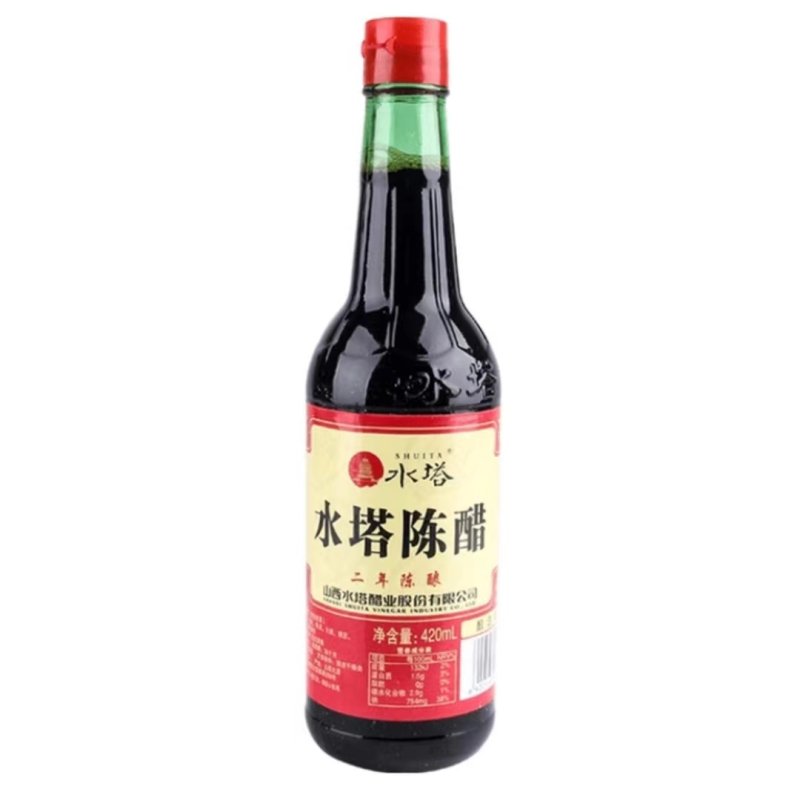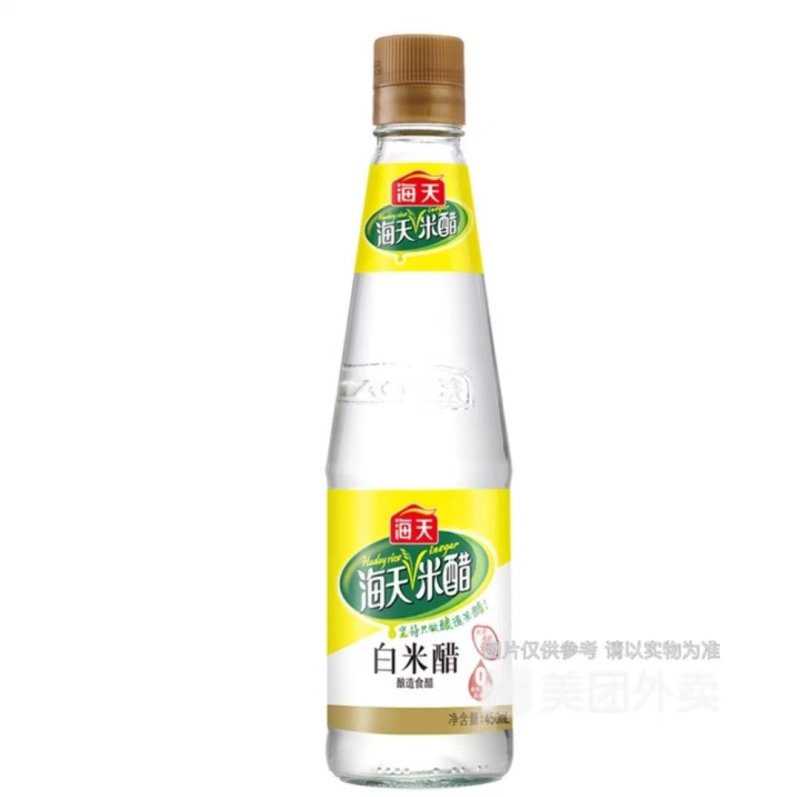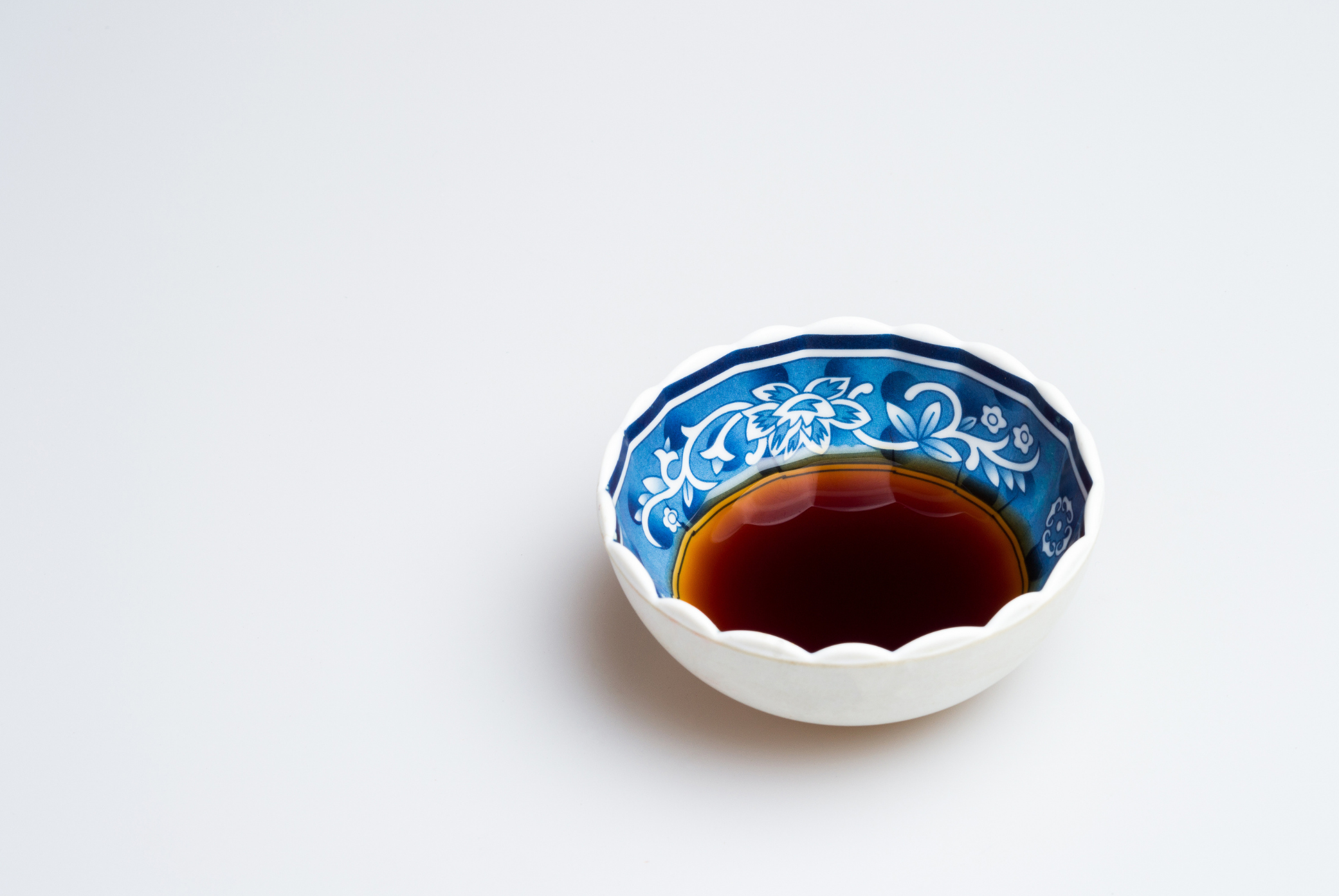A Quick Guide to Some of the Different Types of Chinese Vinegar
Ever been in a Chinese supermarket surrounded by shelves of Chinese vinegar and had no idea what the differences are or which one to buy? Well, don't fret, because what follows is a guide to Chinese vinegars, how they differ, and what they are normally used for. Zhenjiang Vinegar (镇江香醋 zhènjiāng xiāngcù) Zhenjiang vinegar, also known as Chinkiang vinegar, is the most well-known Chinese vinegar and also the most commonly found outside of China. As you can guess from the name, it originates from Zhenjiang in southeast China's Jiangsu Province and reportedly has a history of over 1,400 years. Zhenjiang vinegar's main ingredient is generally glutinous rice, although wheat, barley and other grains are also added. It has a mellow, fragrant taste and is sweeter than white or red vinegar. This vinegar is generally used to make cold dishes (凉拌菜 liáng bàn cài), or dipping sauces for things like dumplings. One of the most famous brands of Zhenjiang vinegar is Hengshun (恒顺 Héngshùn). It’s won numerous brand awards in China over the years, so it's a pretty safe bet to buy when choosing a vinegar. Shanxi Mature Aged Vinegar (山西老陈醋 shānxī lǎo chéncù) Hailing from north China's Shanxi Province, this is the other major type of black vinegar that’s used in Chinese cooking. Unlike Zhenjiang vinegar, Shanxi vinegar is made from sorghum instead of rice, with other grains like wheat, barley, bran, and peas added to the mix. Shanxi vinegar is aged for at least a year, and the ones you’ll normally find in a shop will have been aged for three years. This aging gives the vinegar a stronger flavor than Zhenjiang vinegar and lends it more deep sour notes. The strong flavor of Shanxi vinegar means that it is often used in braised dishes (红烧菜 hóng shāo cài) as well as some cold dishes where a stronger sour flavor is desired. For those who just love that strong vinegar flavor, this can also be the preferred choice for dumpling dipping. The most commonly found brand of Shanxi vinegar is probably Shuita (水塔 Shuǐtǎ), which has a few different varieties, such as one that has been aged for ten years. White Rice Vinegar (白米醋 báimǐcù) This vinegar is the most similar to Western kinds of vinegar in flavor and probably comes closest in flavor to apple cider vinegar, although it’s less strong and doesn’t have the fruity undertones. It’s made from fermented rice and ranges from clear to pale yellow in color. White rice vinegar is usually used for making Chinese pickles (跳水泡菜 tiàoshuǐ pàocài) because its clear color doesn’t affect the food. It’s also often used in Cantonese-style sweet and sour dishes. Dumpling Vinegar (饺子醋 jiǎozi cù) Lastly, we have dumpling vinegar, which, as you’ve probably guessed, is used for dipping dumplings. Dumpling vinegar can vary a lot depending on the brand, however generally it’s either made from Zhenjiang vinegar or Shanxi vinegar, with garlic, salt (or sometimes soy sauce) added in. Some brands also add other flavors such as ginger. Do you have a preferred type of Chinese vinegar? Let us know in the comments below. READ: 24 for '24: Daccapo's Inspiring and Authentic Italian Dishes Images: Meituan Waimai, Canva Provided:Paid:

Ever been in a Chinese supermarket surrounded by shelves of Chinese vinegar and had no idea what the differences are or which one to buy? Well, don't fret, because what follows is a guide to Chinese vinegars, how they differ, and what they are normally used for.
Zhenjiang Vinegar (镇江香醋 zhènjiāng xiāngcù)
Zhenjiang vinegar, also known as Chinkiang vinegar, is the most well-known Chinese vinegar and also the most commonly found outside of China. As you can guess from the name, it originates from Zhenjiang in southeast China's Jiangsu Province and reportedly has a history of over 1,400 years.

Zhenjiang vinegar's main ingredient is generally glutinous rice, although wheat, barley and other grains are also added. It has a mellow, fragrant taste and is sweeter than white or red vinegar. This vinegar is generally used to make cold dishes (凉拌菜 liáng bàn cài), or dipping sauces for things like dumplings.
One of the most famous brands of Zhenjiang vinegar is Hengshun (恒顺 Héngshùn). It’s won numerous brand awards in China over the years, so it's a pretty safe bet to buy when choosing a vinegar.
Shanxi Mature Aged Vinegar (山西老陈醋 shānxī lǎo chéncù)
Hailing from north China's Shanxi Province, this is the other major type of black vinegar that’s used in Chinese cooking. Unlike Zhenjiang vinegar, Shanxi vinegar is made from sorghum instead of rice, with other grains like wheat, barley, bran, and peas added to the mix.

Shanxi vinegar is aged for at least a year, and the ones you’ll normally find in a shop will have been aged for three years. This aging gives the vinegar a stronger flavor than Zhenjiang vinegar and lends it more deep sour notes. The strong flavor of Shanxi vinegar means that it is often used in braised dishes (红烧菜 hóng shāo cài) as well as some cold dishes where a stronger sour flavor is desired. For those who just love that strong vinegar flavor, this can also be the preferred choice for dumpling dipping.
The most commonly found brand of Shanxi vinegar is probably Shuita (水塔 Shuǐtǎ), which has a few different varieties, such as one that has been aged for ten years.
White Rice Vinegar (白米醋 báimǐcù)
This vinegar is the most similar to Western kinds of vinegar in flavor and probably comes closest in flavor to apple cider vinegar, although it’s less strong and doesn’t have the fruity undertones. It’s made from fermented rice and ranges from clear to pale yellow in color.

White rice vinegar is usually used for making Chinese pickles (跳水泡菜 tiàoshuǐ pàocài) because its clear color doesn’t affect the food. It’s also often used in Cantonese-style sweet and sour dishes.
Dumpling Vinegar (饺子醋 jiǎozi cù)
Lastly, we have dumpling vinegar, which, as you’ve probably guessed, is used for dipping dumplings. Dumpling vinegar can vary a lot depending on the brand, however generally it’s either made from Zhenjiang vinegar or Shanxi vinegar, with garlic, salt (or sometimes soy sauce) added in. Some brands also add other flavors such as ginger.

Do you have a preferred type of Chinese vinegar? Let us know in the comments below.
READ: 24 for '24: Daccapo's Inspiring and Authentic Italian Dishes
Images: Meituan Waimai, Canva



























































